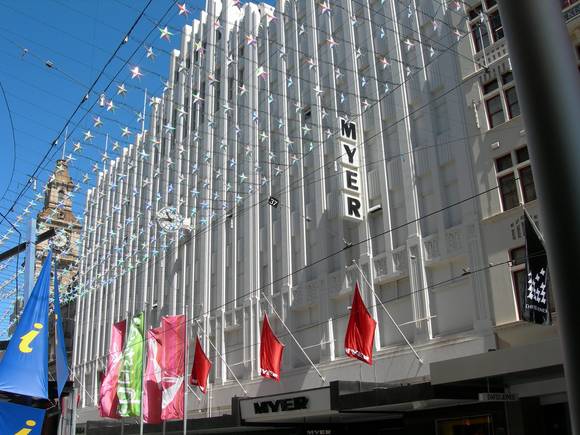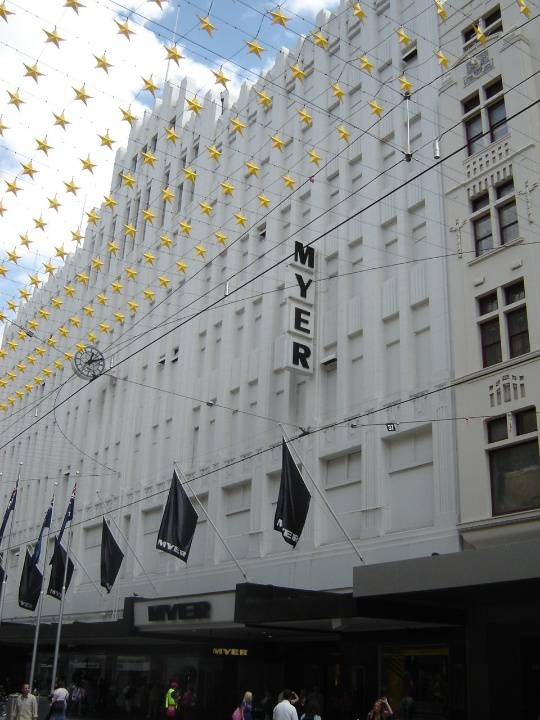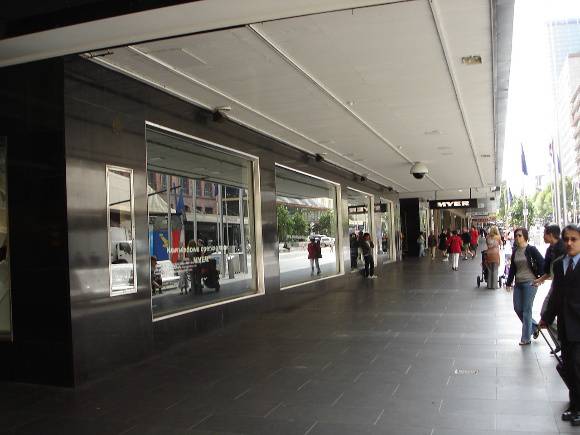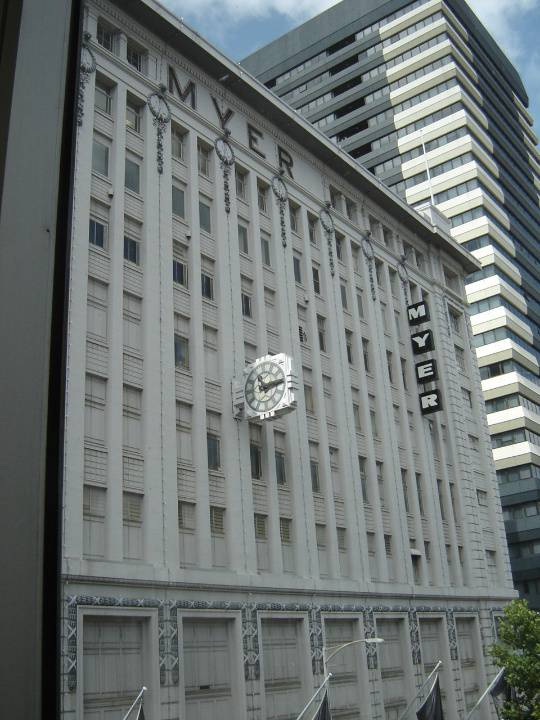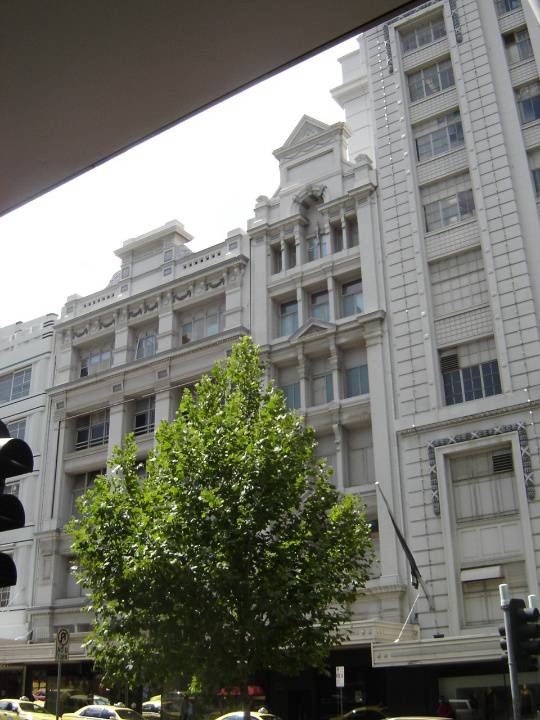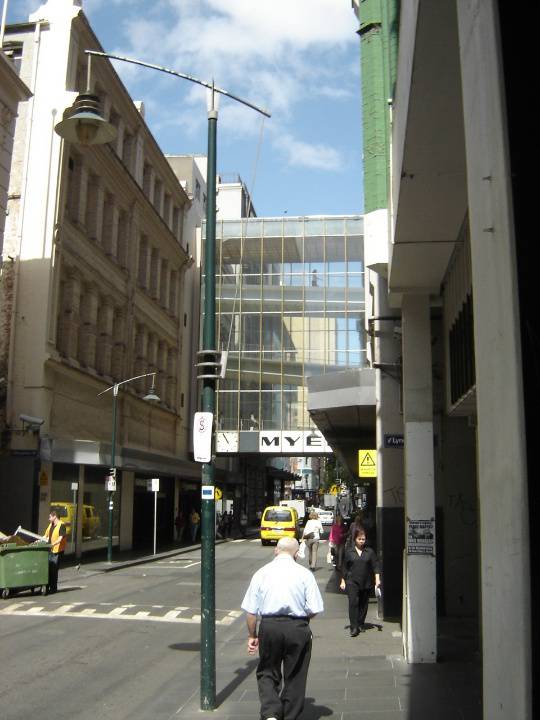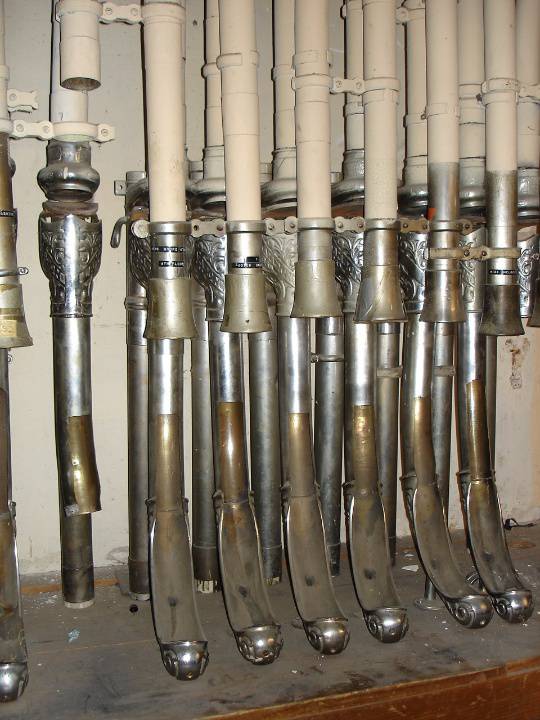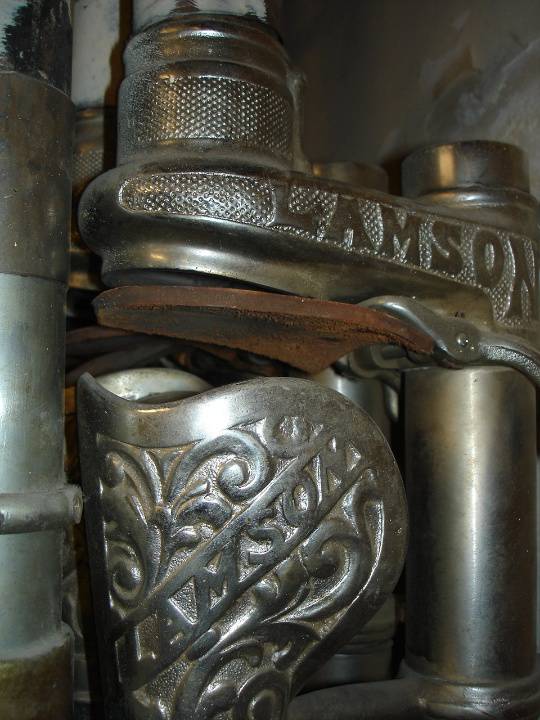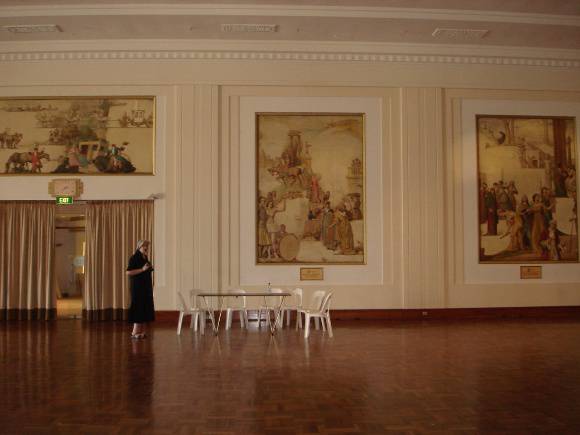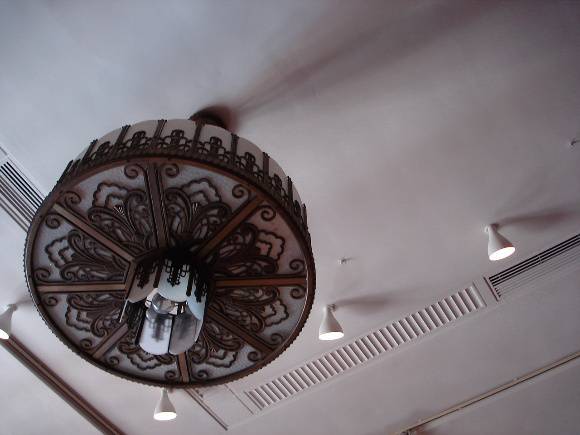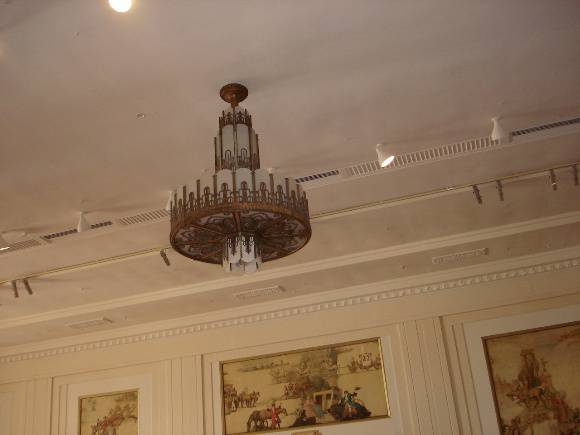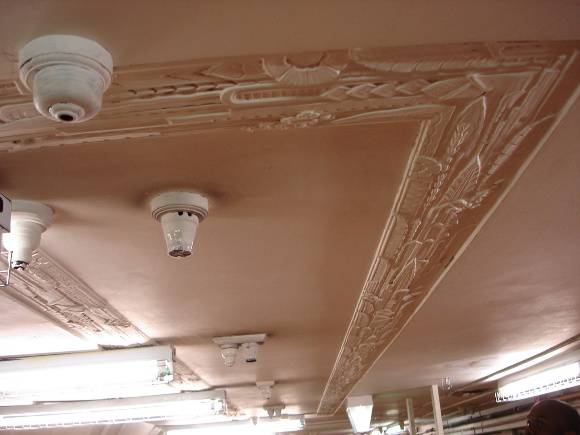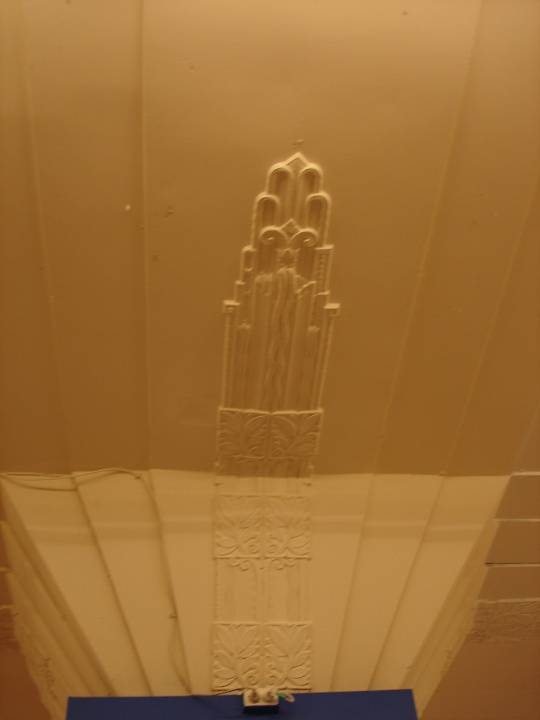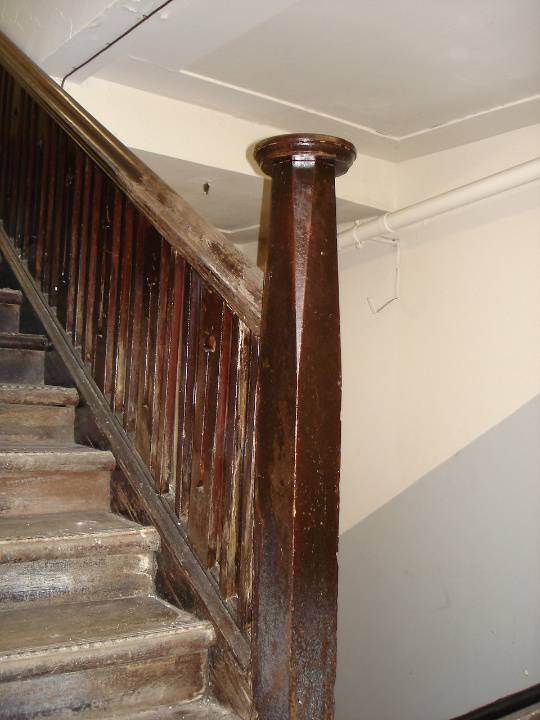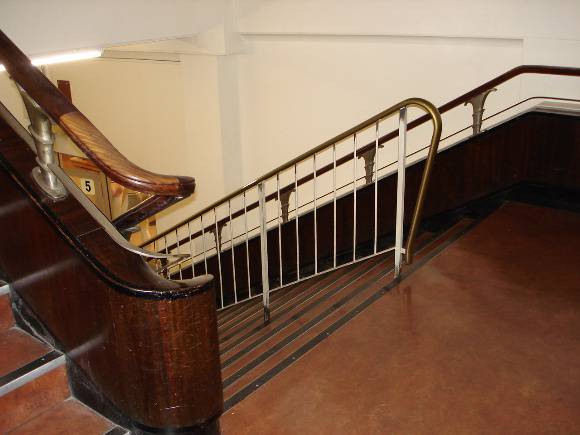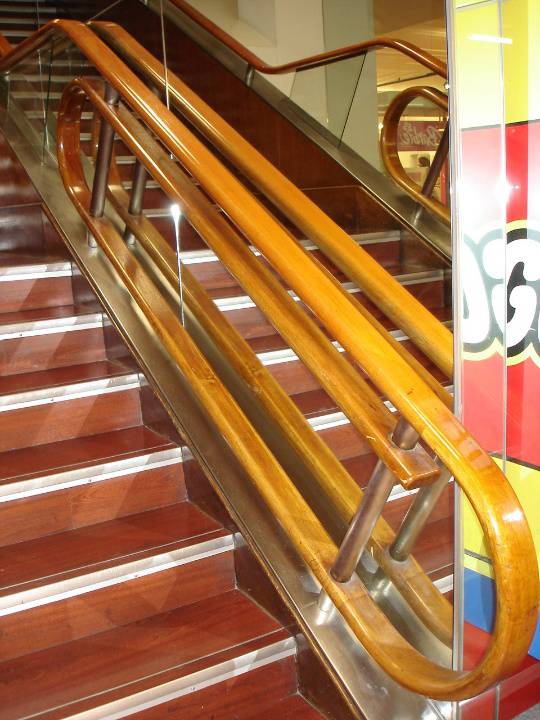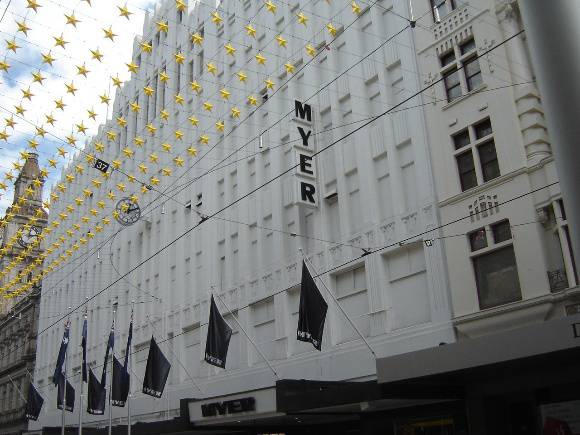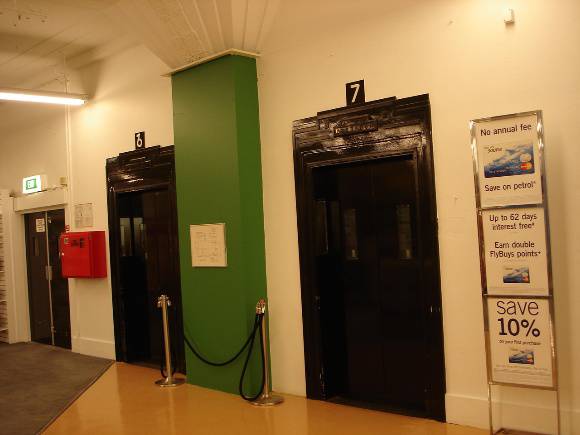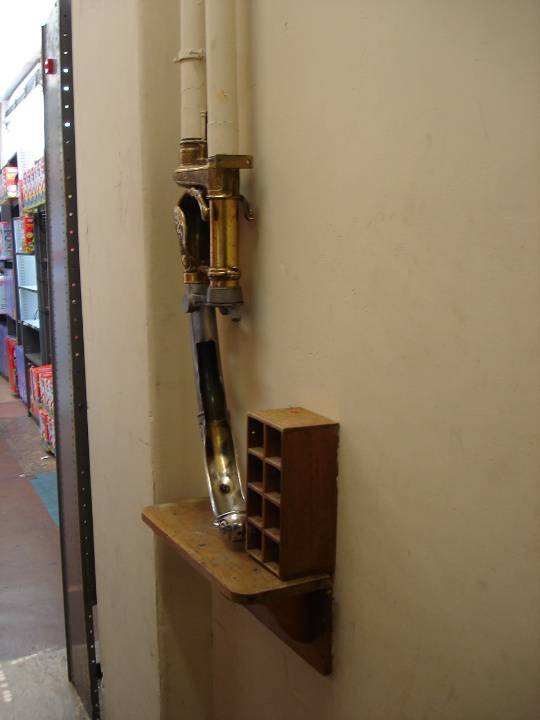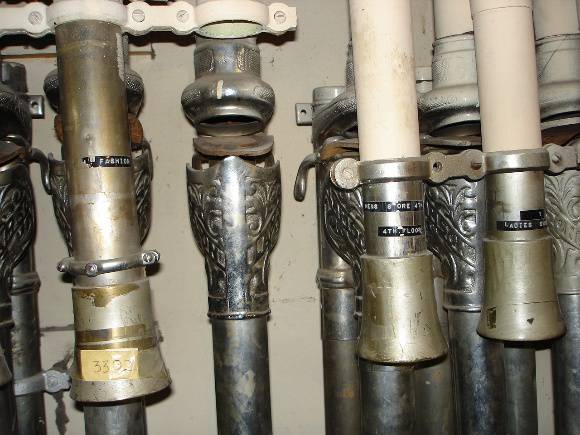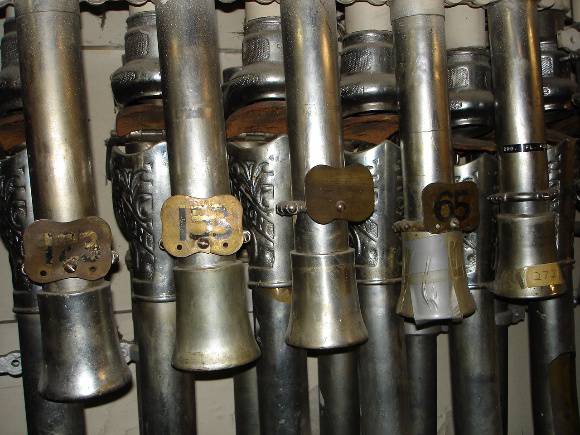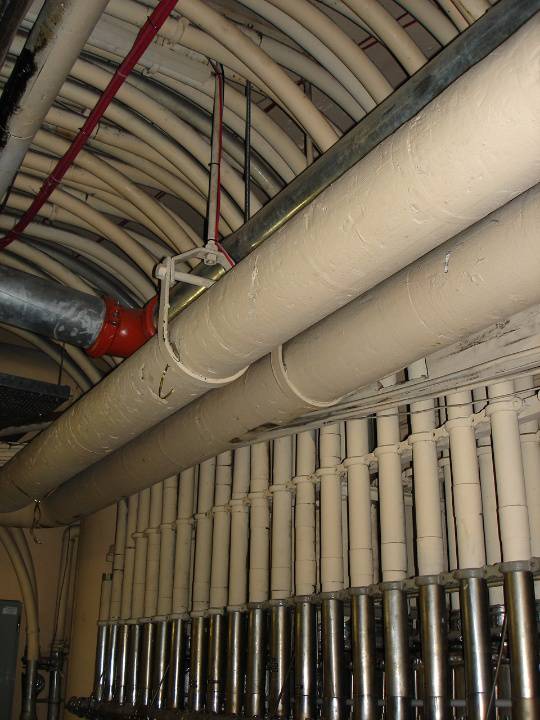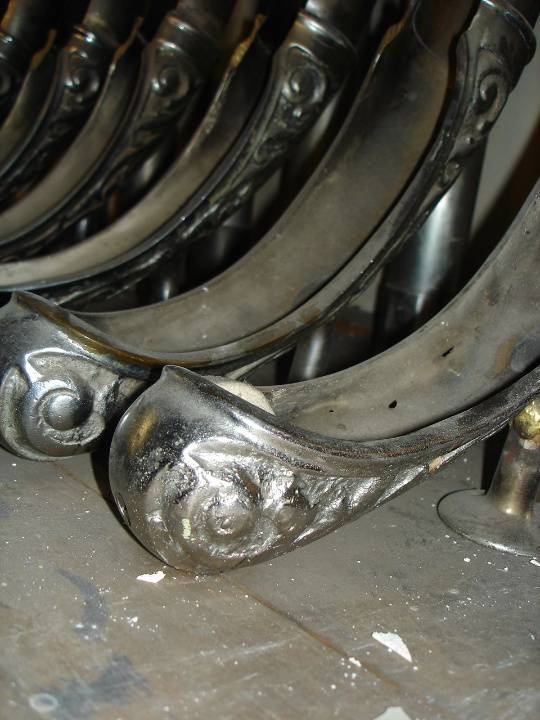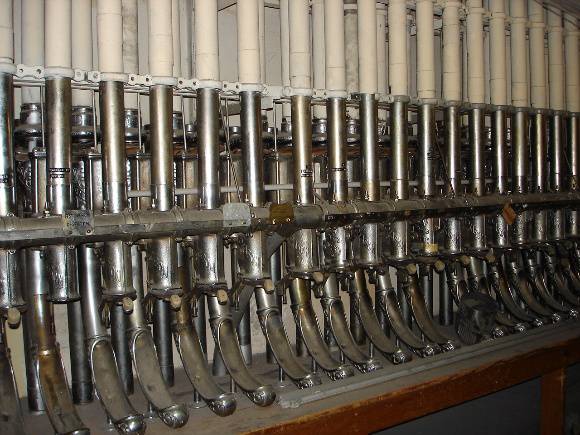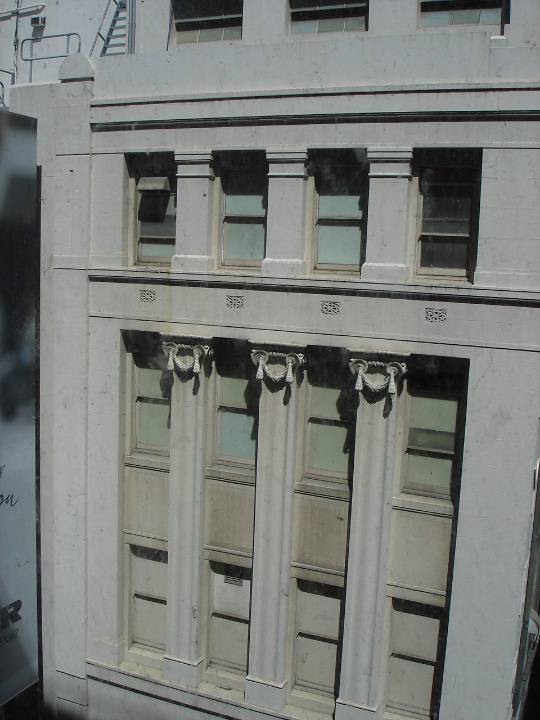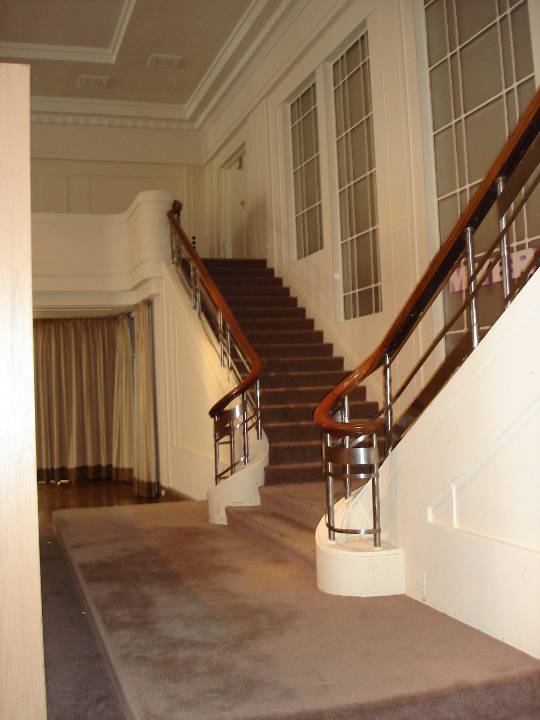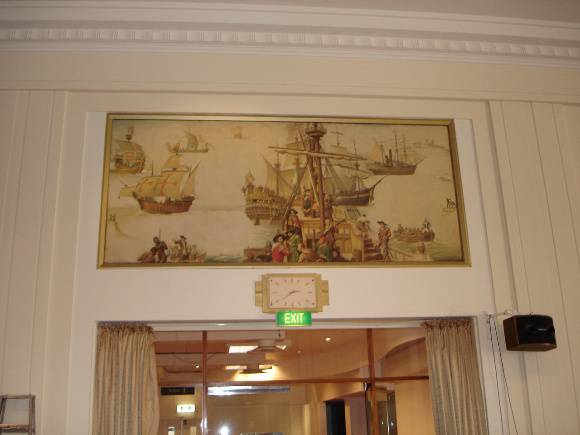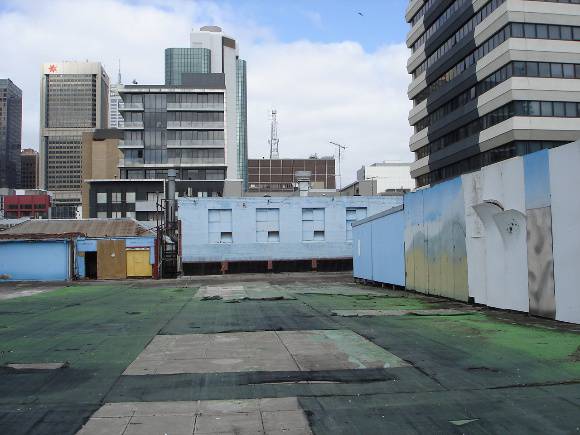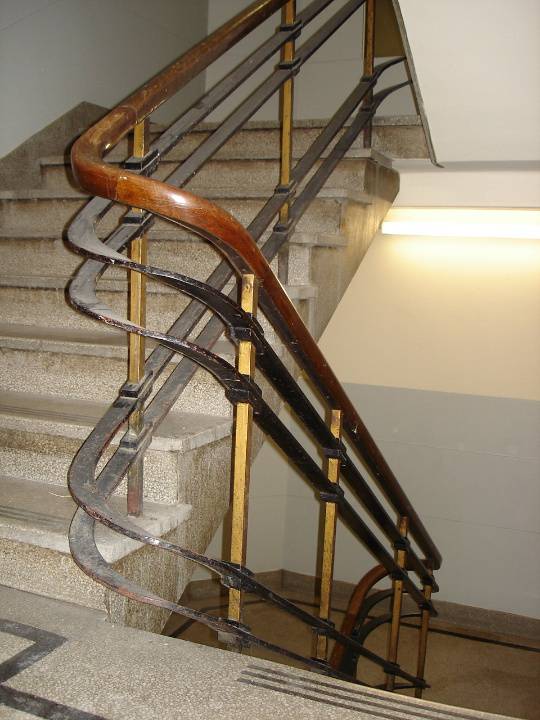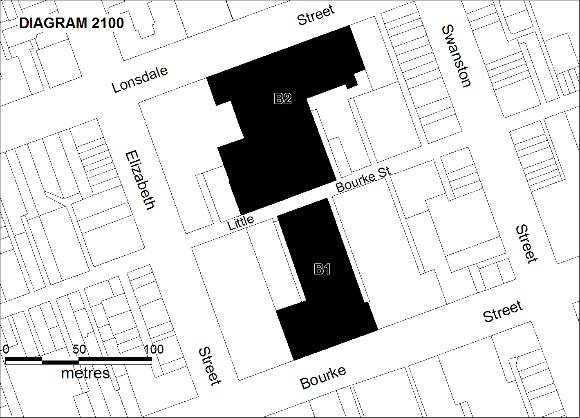| Back to search results » | Back to search page » |
|
MYER MELBOURNE (FORMER MYER EMPORIUM)
Statement of Significance
What is significant?
The Myer Emporium is a department store which occupies an extensive area between Bourke and Lonsdale Streets in Melbourne. The Bourke Street store is located at 314-336 Bourke Street and extends through to 297-309 Little Bourke Street and the Lonsdale Street store is located at 275-321 Lonsdale Street and extends through to 280-84 and 290-316 Little Bourke Street. The area includes ten buildings acquired or constructed by Melbourne businessman and philanthropist Sidney Myer between 1911 and 1934. The first building constructed by Myer was the 1914 Bourke Street building. The new parts of the complex were constructed in stages to the designs of leading Melbourne commercial architects HW and FB Tompkins. The laneways bordering the Myer Emporium include Staughton Place, Lynch Place and Arcade Alley and Angelo Lane.
The former Robertson & Moffat Buildings, South (1881-84), the western section designed by Crouch & Wilson and the eastern section by William Salway (297-311 Little Bourke Street) and North ( 1890) designed by William Salway, 290-292 Little Bourke Street) , the Former Slatter's Building (1892 ) designed by Nahum Barnet (283 Lonsdale Street) and the Former Clarke's building (1892-93) designed by Nahum Barnet (275-281 Lonsdale Street) were purchased by Myer at different times. Their interiors have been altered extensively but the buildings remain significant in demonstrating the history of retailing in Melbourne, and forming part of the larger significance of the history of the Myer Emporium.
The Little Bourke Street Pharmacy, a three story brick building, constructed in c.1910 was purchased by Myer in 1981 and the site of the Little Shop, at 280-84 Little Bourke Street was purchased by Myer in 1951.
The facades of the Lonsdale and Little Bourke Street buildings exhibit Classical and Beaux Arts influences while the Bourke Street facade is a notable example of the Interwar Art Deco style finished in 'Snowcrete' (British White Portland Cement), a new product in the 1930s: this has since been painted. The present Bourke Street facade, eight storeys in height, spanning 200 feet (78.74 metres), was completed in 1933 and brought together a section built in 1914 (east) and a section built in 1933 to give the appearance of one building. It takes up the space of what were previously three separate buildings. The Drum Clock, suspended 72 feet (28.34 metres) above the pavement on the Bourke Street facade, is also a significant exterior feature. The sixth floor Mural Hall was also completed at this time.
A major change to the ground floor Bourke Street facade was made in 1955, and included new window treatments at ground floor level with black granite surrounds, the addition of cantilever awnings at first floor level on Bourke and Lonsdale Streets. The original lighting and signage were removed at this time. Other changes included the addition of the pedestrian bridge between the Bourke and Lonsdale Street stores over Little Bourke Street in 1962. This linked the Bourke and Lonsdale Street stores at first, second and third floor levels. Illuminated 'Myer' signs (fabricated from aluminium framing and internally illuminated acrylic panels) and clocks are fixed to the western and eastern sides of the pedestrian bridge at first floor level. The upper storey windows of the Bourke and Lonsdale Street facade have been overpainted and many changes have been made to the interiors since the 1930s.
The Mural Hall, a dining hall for 1000 people and a venue for fashion parades and performances, was completed in 1933 as part of the sixth floor which was set aside for dining. It is a large rectangular space with a decorative plaster ceiling and balconies and wall panels in a Streamline Moderne style. At the north end of the hall, a pair of "mannequin stairs" lead down from two balconies and the change rooms to a common landing. A temporary catwalk or stage was installed at this landing level for fashion parades and performances. The balustrading of the stairs is formed from 'Staybrite' stainless steel in an abstract ribbon design and the handrail is polished timber. The Hall is decorated with ten murals by renowned artist Napier Waller (1893-1972). The original timber flooring was replaced by parquetry in 1960. The hall is lit by three large and elaborate chandeliers from the original decorative scheme which were designed to provide up to ten different lighting effects.
The Lamson pneumatic tube cash conveying system was installed in the store in 1914 with the dispatch station in the basement and cash terminal stations on other floors fed by concealed tubing in the walls. Lamson systems had been invented in the 1880s, and included overhead wire systems for smaller stores and the more sophisticated pneumatic tube system of cash stations and tubes installed inside the walls of large department stores. The system at Myer consists of a series of embossed ornate chambers and chutes, with chrome-plated cast brass, leather valves, push rods and balancing gear. The system is largely intact, though steel tubing which originally connected to the store's various departments, has been cut off at ceiling level in parts. A secondary cash station is still extant in a storage area at the northern end of the fifth floor of the Bourke Street store. This ornate pneumatic tube system is extremely rare and is the only known example of its type to survive in situ in Victoria.
Simcha (Sidney) Baevski was born in 1878 in Kritchev, Russia, and migrated to Australia in 1898 to join his elder brother Elcon who was working in the drapery business in Melbourne. In 1901, after adopting the family name of Myer, Sidney and Elcon moved to Bendigo, and established a drapery store in Hargreaves Street. The first Myer store was established in Melbourne in 1911 in the Bourke Street premises of the drapery business, Wright & Neil. Myer expanded the business rapidly, influenced by overseas trends in retailing and a visit to the United States in 1910, and by 1914 was able to construct a new store known as the Myer Emporium to a design by H.W. and F.B. Tompkins. The eight-storey Myer Emporium opened on 5 August 1914 and its frame still exists within the fabric of the present Bourke Street store. The design for a new eleven-storey Lonsdale Street store was by H.W. and F.B. Tompkins and construction began in 1925.
Part of the success of the Myer retailing technique was due to the innovative use of sophisticated window displays. Sidney Myer relied on the Myer Bourke Street windows to attract customers, using theatrical sets and model figures to display goods, instead of a conglomeration of miscellaneous goods. New lines were first introduced in the windows. From 1925, a separate department within the store was devoted to display design and installation. New windows were installed to Bourke Street in 1955 and the tradition of the decorated Myer Christmas windows commenced at the time of the Olympic Games in 1956 with windows representing 'Santa Claus and the Olympics'. Each year a different theme is illustrated in the windows with later Christmas windows featuring illustrations of fairy tales. The complex continues to operate as a department store with Myer family involvement.
How is it significant?
The Myer Emporium is of aesthetic, architectural, historical and social significance to the State of Victoria.
Why is it significant?
The Myer Mural Hall is aesthetically significant as a rare and intact surviving example of a Streamline Moderne department store dining room. The Myer Mural Hall contains large-scale interior mural works, including representations of women through the ages, by Napier Waller, a leading neo-classical mural painter of the Inter-War period.
The Myer Emporium is architecturally significant for its design by prominent Melbourne commercial architects H.W. and F.B. Tompkins.
The Myer Emporium is historically significant in the history of retailing in Victoria as a large scale department store, dominant in Melbourne in the first half of the twentieth century.
The Myer Emporium is historically important for its association with innovative businessman and philanthropist Sidney Myer, who introduced a new style of retailing to Melbourne. His generosity to the city of Melbourne and to Victoria included sizable donations to the Shrine of Remembrance, the Children's Hospital, the Melbourne Symphony Orchestra, the University of Melbourne and the Yarra Boulevard. The Myer family followed his philanthropic example, with the Sidney Myer Music Bowl (1958) and establishing the philanthropic Myer Foundation.
The Lamson cash tube system within the Myer Emporium is historically significant as a rare surviving system of cash transport within a large department store, demonstrating the way the store managed customer payment prior to the introduction of cash registers and electronic transactions.
The Myer Emporium is of social significance as a Melbourne institution, a social, retailing and geographical landmark in the city. The entire complex is connected with these social associations, in particular the wide Bourke Street facade, evoked in the colloquial phrase "more front than Myer's" and the Bourke Street Myer Christmas window displays visited by generations of children as part of the annual Christmas holiday ritual.
Group
Retail and Wholesale
Category
Department Store


